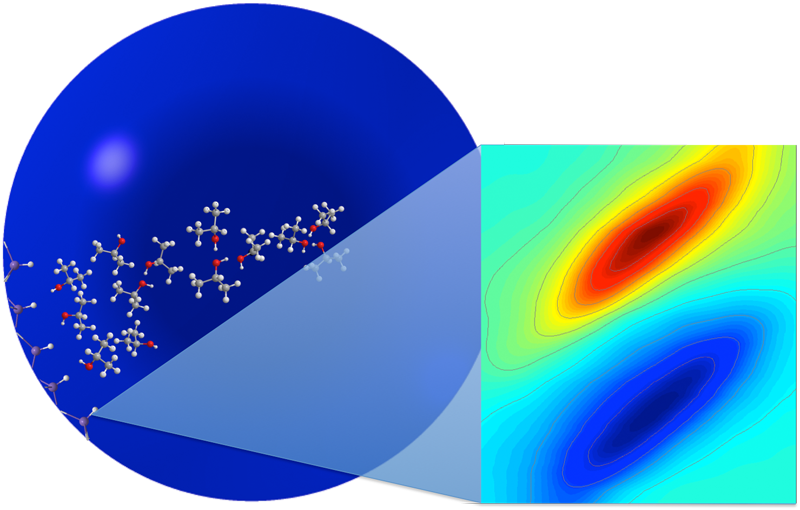

Main navigation | Main content
09/17/2015
Recent research from the research group of Professor
A recently published study, led by graduate students Christopher Huber and Samuel Egger, has shown that a silane vibration (Si-H) on the surface of a silica pore can tell the difference between a small or a large pool of solvent (http://dx.doi.org/10.1021/acs.jpcc.5b05637).
It is well-known that solvents confined to nanoscopic spaces behave differently, often rotating and translating more slowly than they do in the bulk. However, it was not clear whether a functional group on the surface of the nano-container could tell the difference. By combining 2D-IR spectroscopy (Professor Aaron Massari laboratory) and porous silica nanoparticles (Professor Christy Haynes laboratory), the researchers demonstrated that a surface vibration can "feel" solvent molecules moving differently in a range of pore sizes up to 12 nm. This is akin to dipping your toes into a swimming pool on a hot summer day and being able to tell how big the pool is simply by the way that the water feels to your feet.
Interested readers can find the full story in a feature article, "2D-IR Spectroscopy of Porous Silica Nanoparticles: Measuring the Distance Sensitivity of Spectral Diffusion," in the Journal of Physical Chemistry C, available now online and in print later this year.
